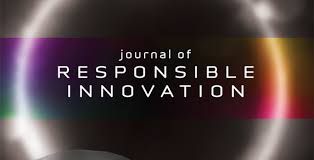
The Bassetti Foundation
The Bassetti Foundation has long been a leader in the field of Responsible Innovation. Founded in 1993, the foundations has dedicated its website, experts and funding capacities to promote the idea of Responsible Innovation. To put that into context, they were probably the first to use this type of terminology, and for many years a search for the term on the Internet led only to their website.
I have been collaborating with the foundation since 2003, so the book tells an insider story. Chapter 4 of my book Responsible Innovation, a Narrative Approach is dedicated entirely to the work and development of the foundation as it stands today.
The chapter contains an interview with President Piero Bassetti, in which he discusses a broad swathe of questions about responsibility in innovation. How can we define responsibility? How can we decide what is right and what is wrong? What is the role of politics (and politicians) in innovation? Who are innovators responsible to? How can we deal with unknown (and unknowable) risk? Just to name a few!
This chapter also introduces Bassetti’s concept of Poiesis-intensive Innovation. This concept addresses forms of innovation that are not science or investment heavy, but are born through knowledge of how to do things (skills) and are driven by goals that differ from those commonly thought of or analyzed in mainstream innovation or business studies (aiming for beauty, or being directed by certain beliefs or philosophies for example).
This concept is not easy to understand, but if we imagine an innovation process that is driven by craft approaches rather than rational investment approaches we are getting close to the idea.
These forms of innovation occur in workshops or sheds, and is not based within mass production or necessarily have that as a goal, allowing creativity to take the lead. This is a core argument for this book, because the main question asked is how similar (or different) are innovation practices in a workshop to those in a laboratory? We will come this in later chapters as I describe experience in both types of workplace.
The Bassetti chapter closes with an analysis of the minutes taken from one of the first foundation meetings. The details that emerge show how forward thinking those present were, as many of the potential problems and issues that innovation brings today were forseen 20 years ago, with questions raised about how they might be addressed.
But I don’t want to spoil the experience and give too much away, it’s all in the book.

